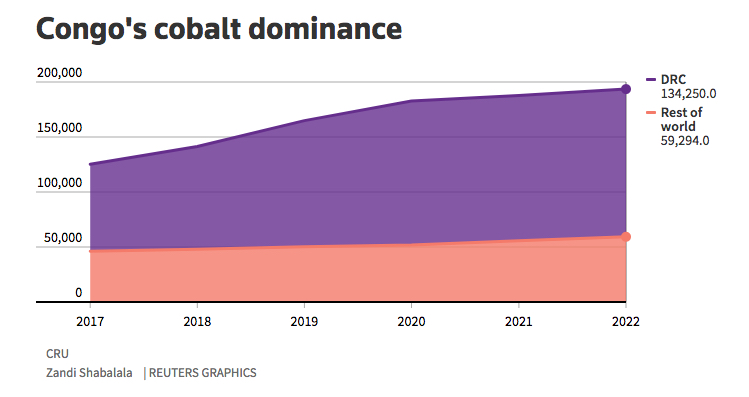Cobalt price: Congo production surges
The price of cobalt is down 7% since hitting near 10-year peaks in March to exchange hands for $89,000 a tonne this week.
Cobalt is still up nearly fourfold since hitting multi-year lows at the beginning of 2016 as worries about supply of the battery raw material combine with expectations of booming demand from the electric vehicle sector. Cobalt's traditional application as an alloy in among others airplane turbines also continues to grow.
The government has shown no sign of bowing to industry demands that it respect 10-year protections for existing projects against changes to the fiscal regimeSupply risks for cobalt are centred on the Democratic Republic of the Congo which is responsible for two-thirds of world output. And the country's share will only increase over the next five years as Chinese investment in new mines come on stream.
The central African nation's output of cobalt - as a byproduct of copper production - is already soaring as top producer Glencore's operations in the country ramps up again after a refurbishment period.
The DRC produced 296,717 tonnes of copper in the first quarter of 2018, up 8.2% over the same period last year, the central bank said in a report on Thursday. Cobalt production in the first quarter of 2018 rose 34.4% to 23,921 tonnes. Global production last year was around 117,000 tonnes.
International mining companies this week threatened legal action if their concerns over a new mining code signed into law in March are not addressed, they said in a letter to the DRC mines minister this week.
Regulations to implement the new code are due to be signed into law next week. The government has shown no sign of bowing to industry demands that it respect 10-year protections for existing projects against changes to the fiscal regime, or scrap plans to institute a windfall profits tax.


Source: Reuters
(With Reuters)